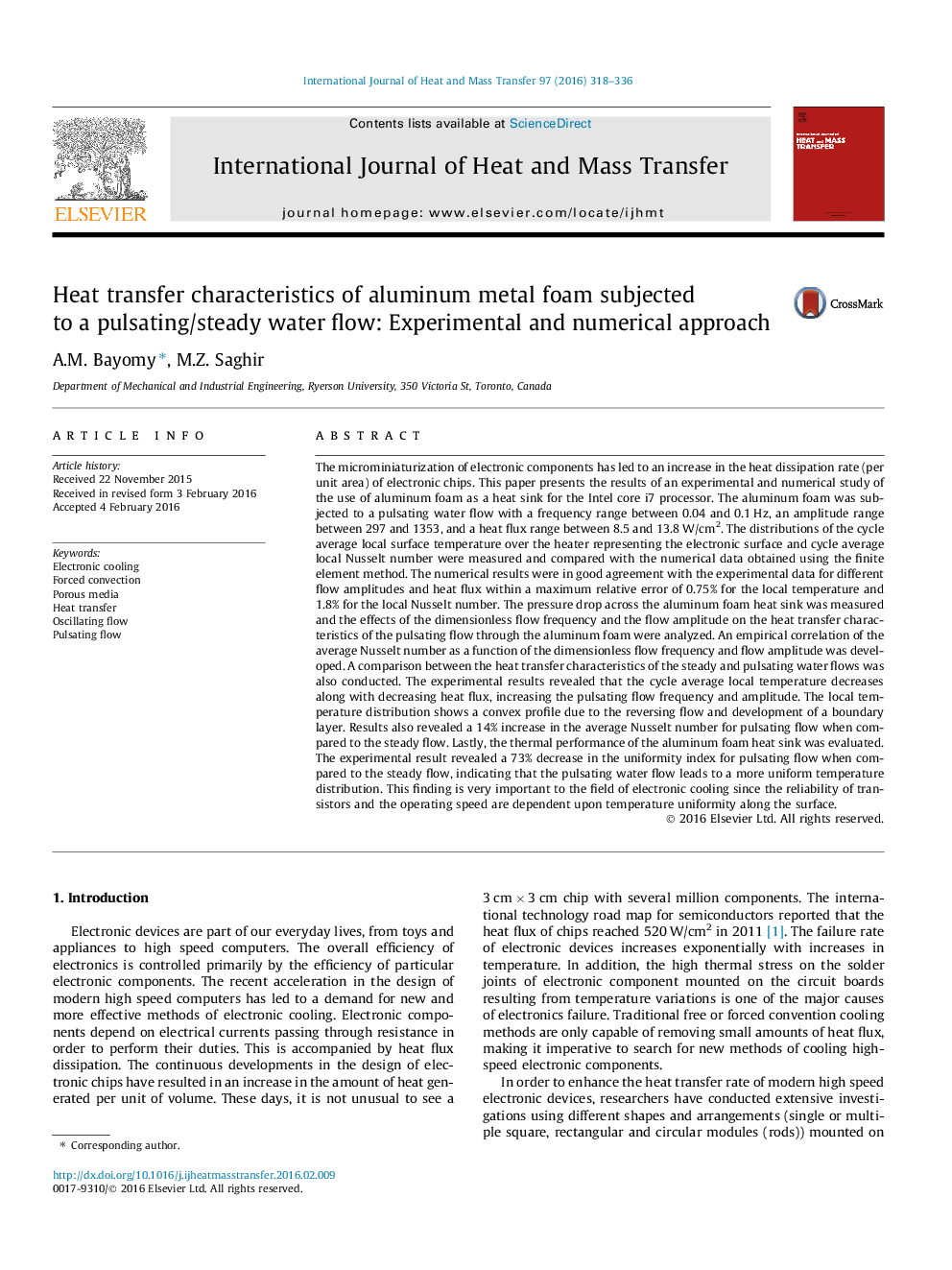| کد مقاله | کد نشریه | سال انتشار | مقاله انگلیسی | نسخه تمام متن |
|---|---|---|---|---|
| 7055608 | 1458045 | 2016 | 19 صفحه PDF | دانلود رایگان |
عنوان انگلیسی مقاله ISI
Heat transfer characteristics of aluminum metal foam subjected to a pulsating/steady water flow: Experimental and numerical approach
ترجمه فارسی عنوان
خصوصیات حرارتی فلز فوم آلومینیوم تحت جریان پالس / ثابت: روش تجربی و عددی
دانلود مقاله + سفارش ترجمه
دانلود مقاله ISI انگلیسی
رایگان برای ایرانیان
کلمات کلیدی
خنک کننده الکترونیکی کنسانتره اجباری، رسانه های متخلخل، انتقال گرما، نوسان جریان، جریان پویا
موضوعات مرتبط
مهندسی و علوم پایه
مهندسی شیمی
جریان سیال و فرایندهای انتقال
چکیده انگلیسی
The microminiaturization of electronic components has led to an increase in the heat dissipation rate (per unit area) of electronic chips. This paper presents the results of an experimental and numerical study of the use of aluminum foam as a heat sink for the Intel core i7 processor. The aluminum foam was subjected to a pulsating water flow with a frequency range between 0.04 and 0.1Â Hz, an amplitude range between 297 and 1353, and a heat flux range between 8.5 and 13.8Â W/cm2. The distributions of the cycle average local surface temperature over the heater representing the electronic surface and cycle average local Nusselt number were measured and compared with the numerical data obtained using the finite element method. The numerical results were in good agreement with the experimental data for different flow amplitudes and heat flux within a maximum relative error of 0.75% for the local temperature and 1.8% for the local Nusselt number. The pressure drop across the aluminum foam heat sink was measured and the effects of the dimensionless flow frequency and the flow amplitude on the heat transfer characteristics of the pulsating flow through the aluminum foam were analyzed. An empirical correlation of the average Nusselt number as a function of the dimensionless flow frequency and flow amplitude was developed. A comparison between the heat transfer characteristics of the steady and pulsating water flows was also conducted. The experimental results revealed that the cycle average local temperature decreases along with decreasing heat flux, increasing the pulsating flow frequency and amplitude. The local temperature distribution shows a convex profile due to the reversing flow and development of a boundary layer. Results also revealed a 14% increase in the average Nusselt number for pulsating flow when compared to the steady flow. Lastly, the thermal performance of the aluminum foam heat sink was evaluated. The experimental result revealed a 73% decrease in the uniformity index for pulsating flow when compared to the steady flow, indicating that the pulsating water flow leads to a more uniform temperature distribution. This finding is very important to the field of electronic cooling since the reliability of transistors and the operating speed are dependent upon temperature uniformity along the surface.
ناشر
Database: Elsevier - ScienceDirect (ساینس دایرکت)
Journal: International Journal of Heat and Mass Transfer - Volume 97, June 2016, Pages 318-336
Journal: International Journal of Heat and Mass Transfer - Volume 97, June 2016, Pages 318-336
نویسندگان
A.M. Bayomy, M.Z. Saghir,
